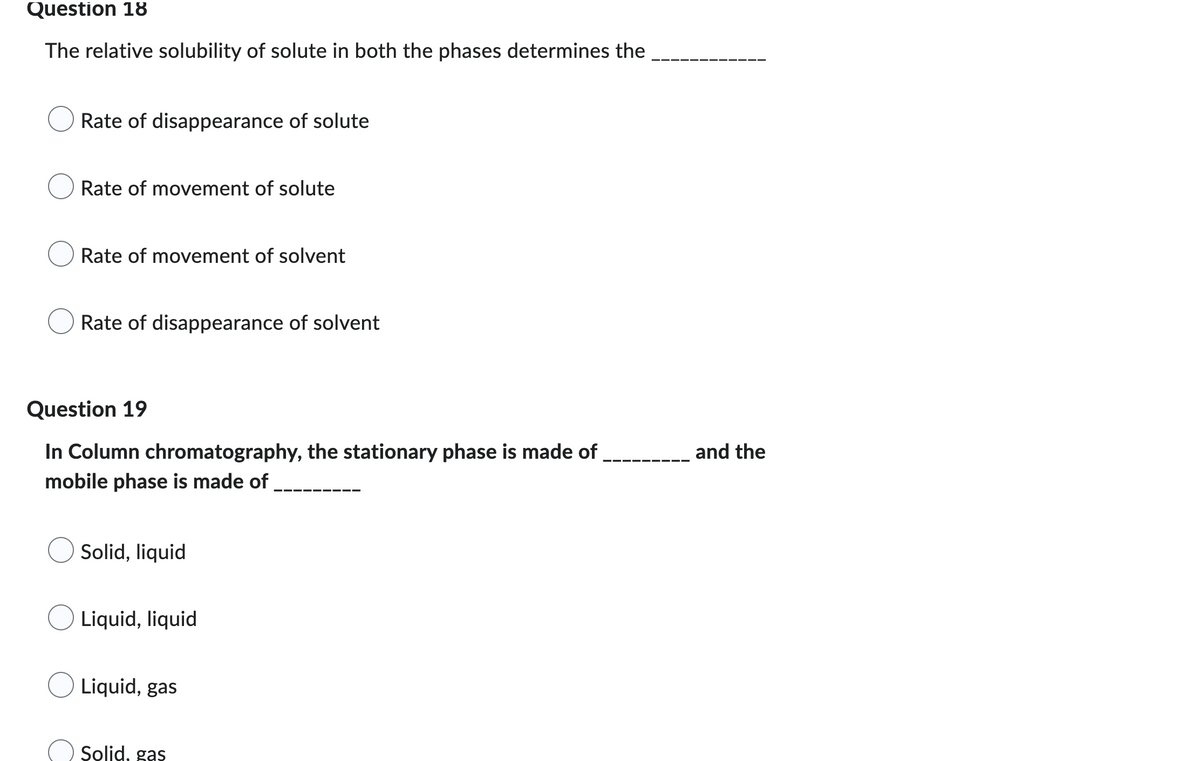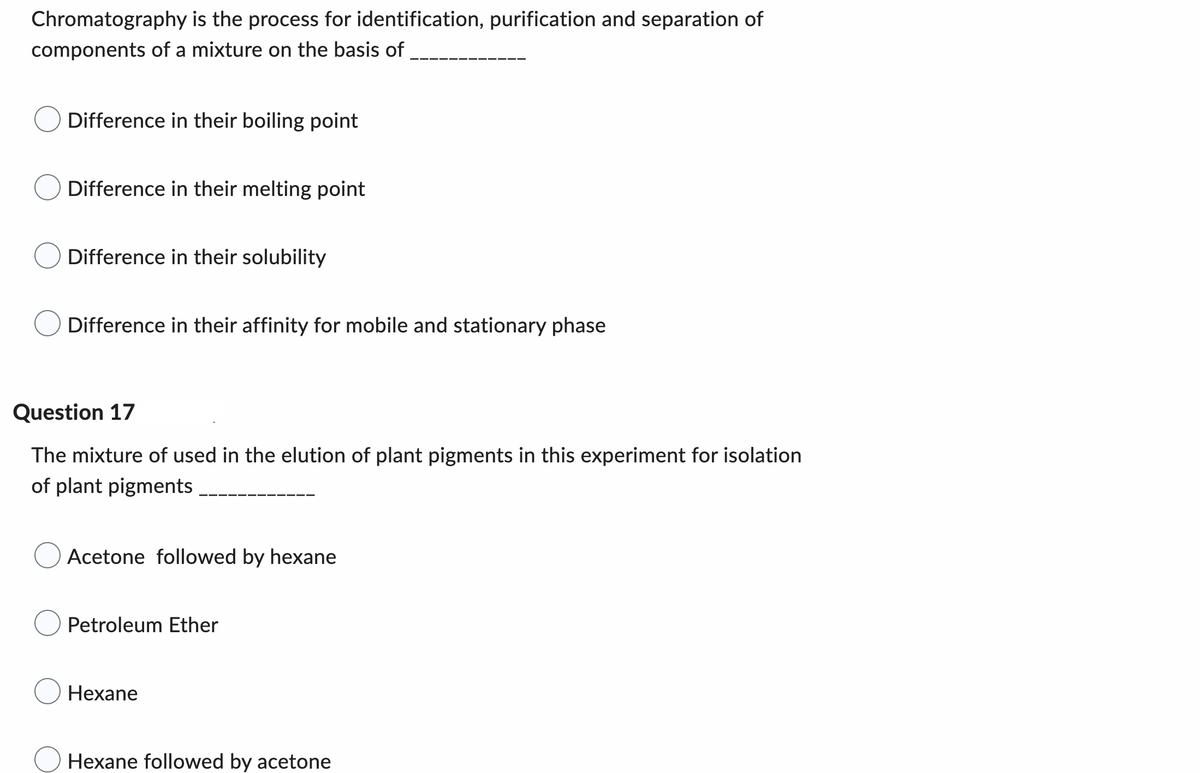estion 18 The relative solubility of solute in both the phases determines the Rate of disappearance of solute Rate of movement of solute Rate of movement of solvent Rate of disappearance of solvent
estion 18 The relative solubility of solute in both the phases determines the Rate of disappearance of solute Rate of movement of solute Rate of movement of solvent Rate of disappearance of solvent
Principles of Instrumental Analysis
7th Edition
ISBN:9781305577213
Author:Douglas A. Skoog, F. James Holler, Stanley R. Crouch
Publisher:Douglas A. Skoog, F. James Holler, Stanley R. Crouch
Chapter27: Gas Chromatography
Section: Chapter Questions
Problem 27.24QAP
Related questions
Question

Transcribed Image Text:Question 18
The relative solubility of solute in both the phases determines the
Rate of disappearance of solute
Rate of movement of solute
Rate of movement of solvent
Rate of disappearance of solvent
Question 19
In Column chromatography, the stationary phase is made of
mobile phase is made of
Solid, liquid
Liquid, liquid
O Liquid, gas
Solid, gas
and the

Transcribed Image Text:Chromatography is the process for identification, purification and separation of
components of a mixture on the basis of
Difference in their boiling point
Difference in their melting point
Difference in their solubility
Difference in their affinity for mobile and stationary phase
Question 17
The mixture of used in the elution of plant pigments in this experiment for isolation
of plant pigments
Acetone followed by hexane
Petroleum Ether
Hexane
O Hexane followed by acetone
Expert Solution
This question has been solved!
Explore an expertly crafted, step-by-step solution for a thorough understanding of key concepts.
Step by step
Solved in 3 steps

Knowledge Booster
Learn more about
Need a deep-dive on the concept behind this application? Look no further. Learn more about this topic, chemistry and related others by exploring similar questions and additional content below.Recommended textbooks for you

Principles of Instrumental Analysis
Chemistry
ISBN:
9781305577213
Author:
Douglas A. Skoog, F. James Holler, Stanley R. Crouch
Publisher:
Cengage Learning

Macroscale and Microscale Organic Experiments
Chemistry
ISBN:
9781305577190
Author:
Kenneth L. Williamson, Katherine M. Masters
Publisher:
Brooks Cole


Principles of Instrumental Analysis
Chemistry
ISBN:
9781305577213
Author:
Douglas A. Skoog, F. James Holler, Stanley R. Crouch
Publisher:
Cengage Learning

Macroscale and Microscale Organic Experiments
Chemistry
ISBN:
9781305577190
Author:
Kenneth L. Williamson, Katherine M. Masters
Publisher:
Brooks Cole


EBK A SMALL SCALE APPROACH TO ORGANIC L
Chemistry
ISBN:
9781305446021
Author:
Lampman
Publisher:
CENGAGE LEARNING - CONSIGNMENT